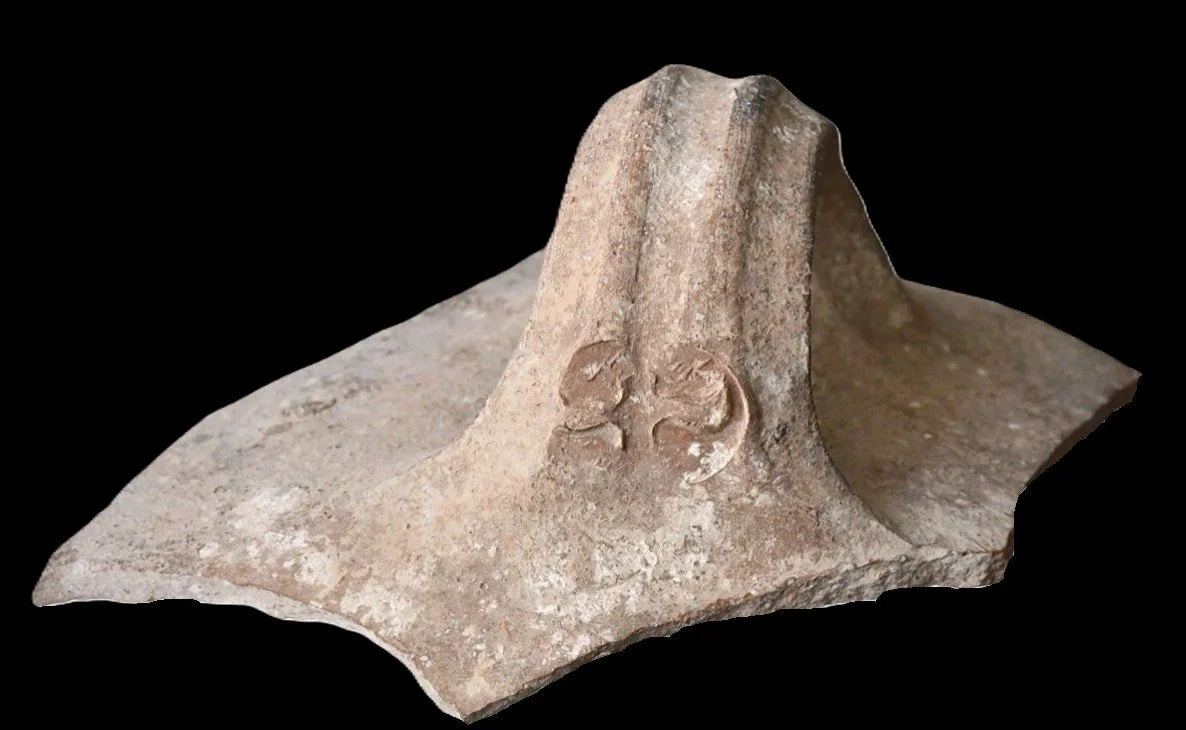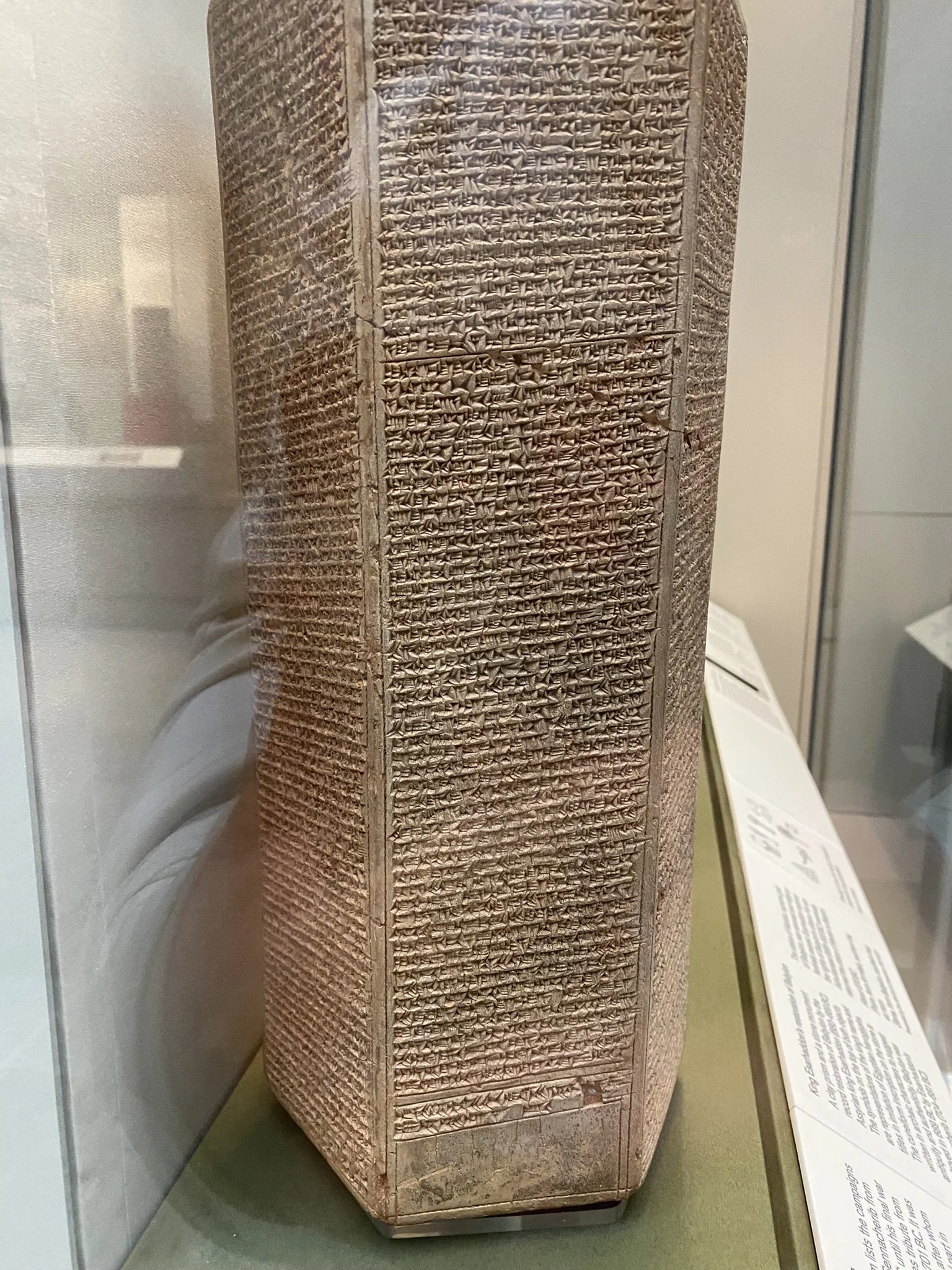Sennacherib boasts of his destruction of the Northern Kingdom of Israel and several of the fortified cities in the Southern Kingdom of Judea. This is chronicled on the Taylor Prism housed in the British Museum (pictured to the right). Hezekiah, the King of Judea, was reigning from Jerusalem at this time. Concerned about Sennacherib's threats, he sought the Word of the Lord through Isaiah the Prophet. The LORD told Isaiah that Sennacherib would NOT overtake Jerusalem (See Biblical reference below). This is alluded to in Sennacherib's own annals.
He states..."As to Hezekiah, the Jew, he did not submit to my yoke, I laid siege to 46 of his strong cities, walled forts and to the countless small villages in their vicinity, and conquered (them) by means of well-stamped (earth-)ramps, and battering-rams brought (thus) near (to the walls) (combined with) the attack by foot soldiers, (using) mines, breeches as well as sapper work. I drove out (of them) 200, 150 people, young and old, male and female, horses, mules, donkeys, camels, big and small cattle beyond counting, and considered (them) booty. Himself I made a prisoner in Jerusalem, his royal residence, like a bird in a cage. I surrounded him with earthwork in order to molest those who were leaving his city’s gate."
ANET: Page 288
Sennacherib never says he conquered Jerusalem, even after the siege, as confirmed in the Bible.
32 ‘Therefore this is what the Lord says about the king of Assyria: “He will not come to this city nor shoot an arrow there; and he will not come before it with a shield nor heap up an assault ramp against it. 33 By the way that he came, by the same he will return, and he shall not come to this city,”’ declares the Lord. 34 ‘For I will protect this city to save it for My own sake, and for My servant David’s sake.’” 35 Then it happened that night that the angel of the Lord went out and struck 185,000 in the camp of the Assyrians; and when the rest got up early in the morning, behold, all of the 185,000 were dead. 36 So Sennacherib the king of Assyria departed and returned home, and lived at Nineveh.
2 Kings 19:32-36 NASB
ANET : Ancient Near Eastern Texts Relating to the Old Testament. Third Edition with Supplement. Ed. James B. Pritchard. Princeton: Princeton Univ. Press, 1969
Type: LMLK Hezekiah sealed jar handle
Age: 800-700 BCE
Era: Iron Age
Culture: Israelite
LMLK seals (with LMLK meaning 'of the king') are ancient Hebrew seals stamped on the handles of large storage jars first issued in the reign of King Hezekiah (Late 8 Century BC.) and discovered mostly in and around Jerusalem. Several complete jars were found in situ buried under a destruction layer caused by Sennacherib at Lachish. While none of the original seals have been found, some 2,000 impressions made by at least 21 seal types have been published. The iconography of the two and four-winged symbols are representative of royal symbols whose meaning "was tailored in each kingdom to the local religion and ideology.
Scholars believe that the LMLK jars were developed as a way to gather taxes (grain, oil, wine, etc.) from the cities of Judea. These taxes (stored in these LMLK jars) were used to pay off the Assyrian army who were sent to destroy Judea. The Bible states that Hezekiah was paying tribute to the Assyrian King Sargon; however after Sargon’s death, he decided to rebel. The next king of Assyria, Sennacherib, was very upset and started a military campaign against Judea. We learn that many of the Judean cities were destroyed, but, as the Bible states, Jerusalem was spared. This is confirmed by Sennacherib’s Prism. See information below pictures.


